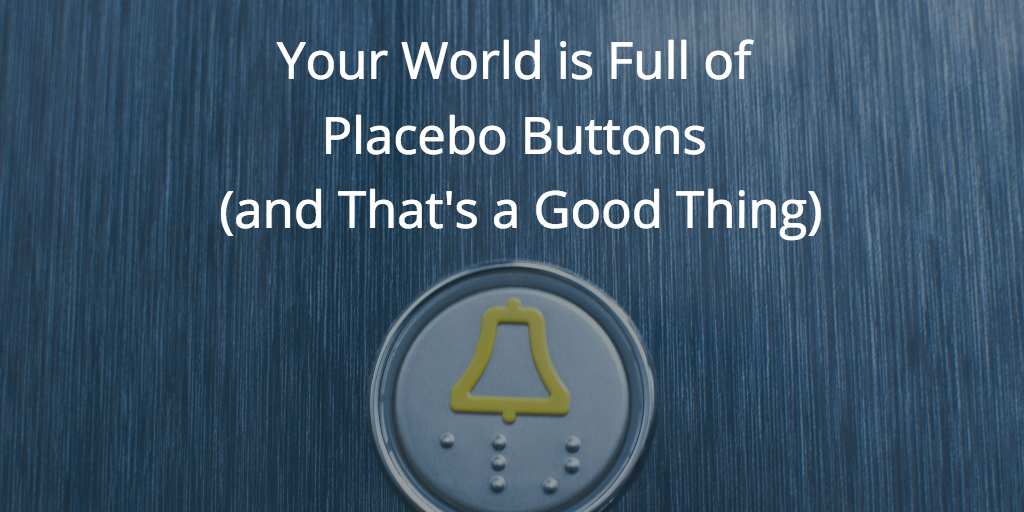Source: Nir and Far All products and services, everything we buy and use, have but one job—to modulate our mood. The fundamental reason we use tech

All products and services, everything we buy and use, have but one job—to modulate our mood. The fundamental reason we use technology of all sorts, from stone tools to the latest iPhone, is to make us feel better. To prove the point, consider how perception of relief is tantamount to actual relief. Consider the so-called placebo button.
Take, for example, the lowly crosswalk button. When we find ourselves at an intersection, waiting for a light to change, we tap the button, sometimes more than once. Most people believe these buttons are connected to some master control box that will signal the light to change so we can cross the street. In truth, these buttons often do nothing.
The crosswalk button is a relic of the age before computer-controlled traffic signals. In New York City, for instance, “the city deactivated most of the pedestrian buttons long ago,” a New York Times article reported in 2004. Of the 3,250 walk buttons in the city at the time, some 2,500 were not functional. And yet, the Times noted, when faced with the buttons, “an unwitting public continued to push.”
Then there are elevator buttons. Have you ever noticed someone pushing the call button on an elevator when it’s already lit? I must admit I’ve done it myself. Particularly when I’m in a rush, I want to make sure the button has been pressed correctly—as if there were a way to press it incorrectly. It’s a wholly irrational response, yet in the moment, I can’t help myself. When I push the button, I feel better.
Why? Because discomfort is often alleviated by action—by our doing something that makes us feel in control, even if, in reality, we have no control whatsoever.
Once inside the elevator, you may notice a hurried passenger pressing the close door button repeatedly, in hopes of speeding things along. But the button is another example of what’s known as a “mechanical placebo.” According to a 2008 article in the New Yorker, the close door buttons included in most elevators since the 1990s do not actually work the way passengers think. The buttons are installed for emergency personnel, not for the general public. Firefighters use the buttons to open and close doors between flights, but they can do so only with a key or other special instructions.
So why do we keep pushing the darned buttons? Of course, not all the buttons we encounter in…

COMMENTS